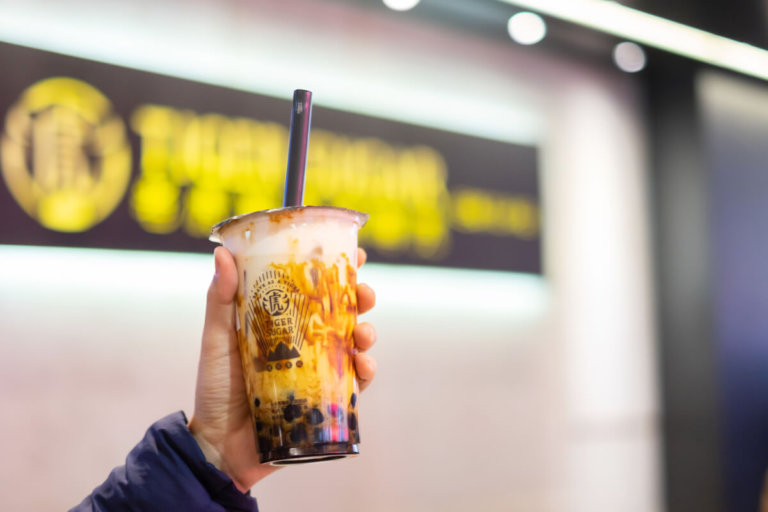
Hong Kong food has earned a reputation among foodies that transcends the country’s 1,106 square km area in Southeast Asia.
As it started out as a fishing village, seafood is a large part of Hong Kong food culture. Dig deeper, however, and there are more delicious appeals here, from inventive street food to iconic beverages that inspire championships.
Students here would agree that the wide variety of Cantonese and fusion cuisine provides many exciting options to feast on while exploring the city. Here are their top recommendations:
Hunt for milk tea

Over 2 million cups of milk tea are consumed in Hong Kong every day. Source: Shutterstock
Hong Kong drinks the most milk tea in the world; over 2 million cups are consumed every day. In fact, it was declared an item of “intangible culture heritage” back in 2017.
This famous tea is boiled and repeatedly “pulled” through a cloth filter.
Milk tea with evaporated milk is known as “lai cha in Cantonese, or “cha zau” if the tea is made with condensed milk. On the other hand, the popular brown sugar bubble milk known as “bubble tea” or “boba” typically does not contain tea. It does make for a tasty treat on a hot day, though.
Sample street snacks

This egg waffle is also known as an “eggette,” or “gai daan zai” in Cantonese. Source: Shutterstock
Crispy-yet-soft egg waffles. Crispy pork chop buns. Pan-friend tofu infamous for its tangy smell. These are just some of the snacks you’ll find along the streets of Hong Kong, and every visitor should try them at least once, or twice, or 300 times — go ahead, we won’t judge.
Plus, they are quick, fuss-free, friendly to a student’s wallet and the best way to discover a country’s cuisine.
Indulge in some dim sum

Roasted pork rice flour buns depicting pigs are displayed in bamboo steamers as kitchen staff work at a dim sum restaurant in Hong Kong. Source: Anthony Wallace/AFP
What’s not to love about dim sum? These bite-sized delights deliver an umami bomb in a single bite. Enjoy it alone with a big pot of tea, with friends after class, while Netflixing, in the middle of chasing deadlines, inside luxurious hotels — life’s short, eat dim sum whenever you can.
On top of that, dim sum can cater to any dietary preference. They can even be enjoyed at any time of day, though it’s typically a brunch affair.
You can pick up some dim sum from trolleys at traditional tea houses, long-established restaurants and Michelin-starred establishments. Tim Ho Wan, dubbed as “the world’s cheapest Michelin-star restaurant,” has branches in Sham Shui Po, North Point and Tai Kok Tsui.
Eat at the market like a local

You can find some of Hong Kong’s most authentic food at its day and night markets. Source: Anthony Wallace/AFP
You can find some of the most authentic Hong Kong food at its markets, according to local food guide Ashley Yue. Since shopping for fresh groceries is a daily activity for many citizens, the food courts at the markets are always packed with hungry people.
Here, you can find everything from brothy soul foods — like the inimitable imitation shark’s fin — to exotic dishes of snake meat and pig offals. Pro-tip: go with local university mates who can speak Cantonese. They’ll likely know the best spots around town, too.
Enjoy meat the Asian way

A hearty bowl of beef brisket soup is sure to warm your belly and soul. Source: Shutterstock
Beef belly is simmered slowly in spices to make the tender and flavourful beef brisket. You can enjoy this culinary pride of Hong Kong with rice or over a hearty bowl of noodle soup.
Other meat dishes that you simply can’t miss include barbecued pork, particularly honey-glazed “char siu” and fatty pork belly. The key is to find the one with the perfect meat-to-fat ratio.
Liked this? Then you’ll love…
The quintessential foods of college kids in 5 countries
Immunity-boosting foods international students should be eating according to our mothers







